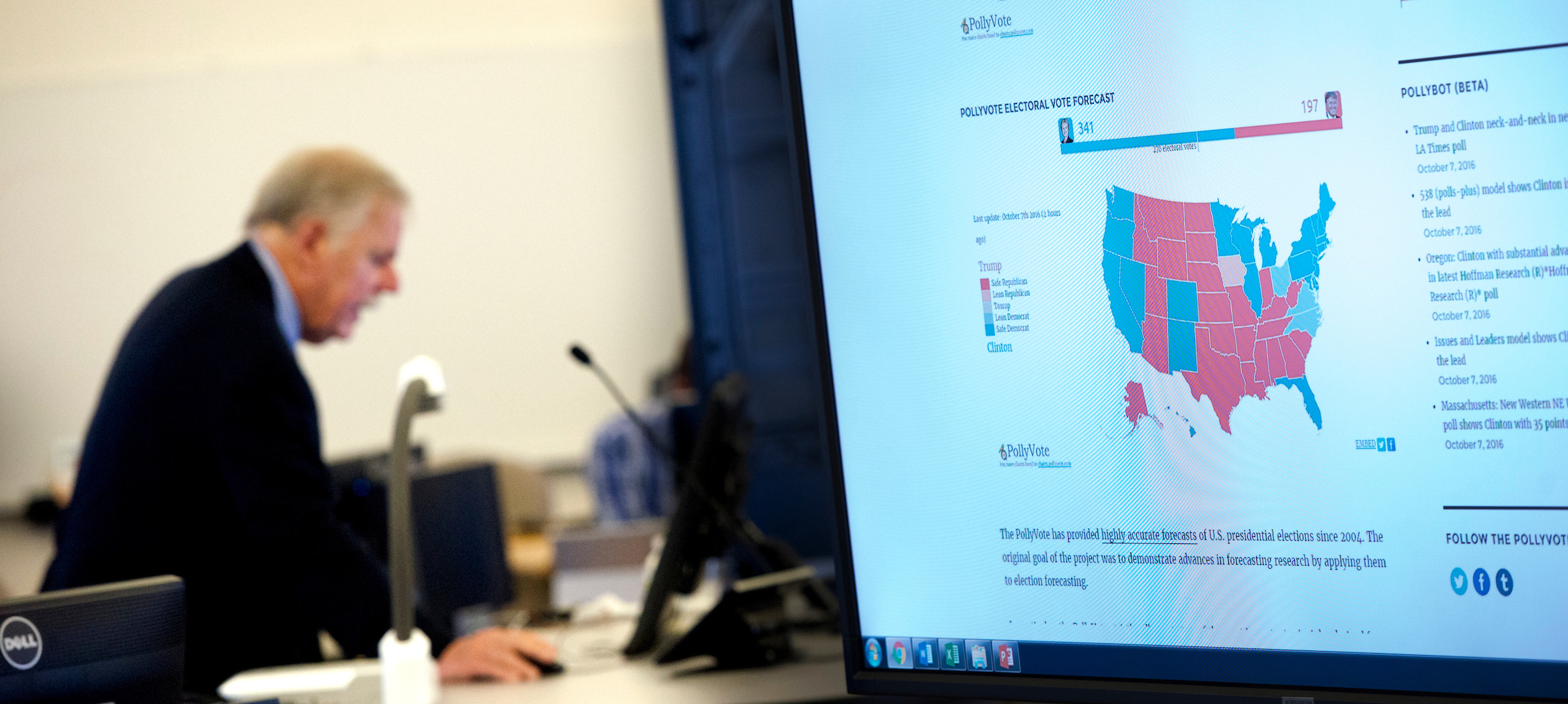Distinguished UWF Professor Part of Election Forecasting Project
Pensacola – Forecasters use many methods to predict the outcomes of presidential elections. But research suggests the most accurate approach is to combine multiple forecasts made with different methods that process different sources of information

That’s what PollyVote does, and its results have been strikingly accurate.
PollyVote launched in 2004. Dr. Alfred G. Cuzán, a distinguished professor in the University of West Florida Department of Government, co-founded the project with Dr. Scott Armstrong, professor of marketing at the Wharton School at the University of Pennsylvania, and Dr. Randy Jones, a professor emeritus of political science at the University of Central Oklahoma. The current leader of the project is Dr. Andreas Graefe, who holds a professorship at Macromedia University, Munich. Also part of the PollyVote team is Mario Haim, a Ph.D. candidate in communication and a trained computer scientist.
“The goal was to demonstrate and estimate the power of combining forecasts for improving forecasting accuracy,” Cuzán said.
PollyVote has correctly predicted the outcomes of each of the last three U.S. presidential elections to within one percentage point, on average. The project’s forecasts rely on voter polls, prediction markets, and the judgment of experts, mostly political scientists. It also incorporates both index and politico-economic models, as well as citizen-expectation surveys in which pollsters ask likely voters who they think will win, not just for whom they plan to vote.
Cuzán spoke at a recent UWF Data Dialogues lecture about the history of and methodology used by PollyVote.
Data Dialogues is an ongoing series of lectures that focuses on data visualizing and analysis in research across disciplines. The UWF Department of Government sponsors the series.
Combining prediction methods is more effective because it uses more information and cancels out the errors of individual forecasts. Each of the forecasting methods used by PollyVote is weighted equally, Cuzán said.
“We average all the forecasts within each method. And then we take the averages obtained within the different methods and average those,” Cuzán said. “So we average the averages.”
For this year’s presidential election, PollyVote has consistently forecast that Democratic nominee Hillary Clinton will defeat the Republican contender Donald Trump. As of Oct. 11, PollyVote forecast Clinton to win 52.9 percent of the popular vote to 47.1 percent for Trump.
PollyVote also predicts this year’s Electoral College outcome, with Clinton forecast to win 347 votes to 191 for Trump.
But no citizen should take these forecasts as an excuse not to vote, Cuzán said.
“If you’re a Hillary fan, don’t get complacent. Go out to vote,” Cuzán said. “If you’re a Trump supporter, don’t despair. Go out to vote. It’s only a forecast.”
Cuzán said performance of the individual forecasting methods that go into the PollyVote projection has varied in different elections.
“On average, citizen forecasts have outperformed all over methods incorporated into the PollyVote,” he said.
In addition to analyzing the relative accuracy of different forecasting methods over time, PollyVote team members also provide links to all publications generated by this project and an archive of replication data for other researchers to use, Cuzán said.



